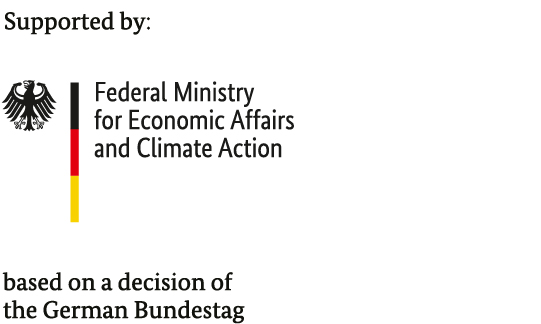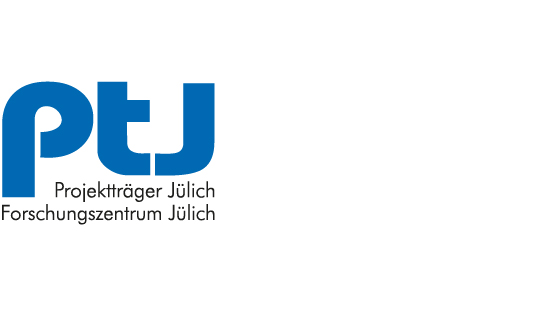LIGNA 2025:
Fraunhofer WKI conducts research into sustainable wind turbines
The Fraunhofer WKI is developing innovative solutions for increasing recyclability in the wind-energy sector. By taking the recyclability of rotor blades into account during their construction process, the researchers are ensuring sustainability in the material cycle. Through their expertise in the bonding of wood and hybrid components, researchers at the Fraunhofer WKI have furthermore enabled the construction of what is currently the tallest wooden tower for commercial wind turbines. The Fraunhofer WKI will be showcasing its expertise at LIGNA 2025, Hall 26, Stand B78, with an exhibit featuring the wooden wind-turbine tower, a rotor blade, and recycled products made from rotor blades.
Wind energy is a central pillar of the energy transition in Germany. With around 30,000 wind turbines, this form of energy generation not only promotes technological innovation but also creates jobs and reduces the dependence on fossil fuels. Researchers at the Fraunhofer WKI are working on pioneering recycling processes that enable the high-quality material recycling of rotor blades.
Recyclable wind-turbine rotor blades by means of detachable resin systems
A wind turbine has a service life of around 20 to 25 years and then has to be disposed of. The tower, made from steel and concrete, is already very easy to recycle; for the rotor blades, however, this is not yet the case. The blades consist of complex multi-material composites - firmly bonded using thermosetting, non-detachable resin systems. One promising solution approach involves using a releasable matrix in order to construct rotor blades in such a way that the materials can be separated by type at the end of their useful life. The Fraunhofer IWES project “ReusaBlade” focuses on recycling paths for the rotor blades that will be produced in the coming years. With the aid of innovative, detachable epoxy resins, material-separation strategies are to be developed and tested in order to make rotor-blade materials repeatedly reusable. As a result, the high-quality recycling of rotor blades should become simpler, more energy-efficient and more economical in future.
“In collaboration with the Fraunhofer IWES and industrial partners, we are developing industrially feasible production, separation and processing methods for this purpose. Our focus at the Fraunhofer WKI lies on the processing and reutilization of recovered glass fibers and balsa-wood components. We are therefore contributing towards ensuring that wind turbines can be 100 percent recycled at the end of their useful life,” reported Peter Meinlschmidt, Project Manager at the Fraunhofer WKI.
Recycling technologies for recyclable fiber-reinforced plastics
The main objective of the EU project “RECREATE”, which the researchers are also presenting at LIGNA 2025, is the development of innovative technologies for promoting the profitable reutilization of end-of-life composite components for industrial applications. The project is divided into a variety of technological use cases and addresses a multitude of different target sectors, such as wind energy and the automotive industry. The Fraunhofer institutes IWU and WKI are working in collaboration with further partners on the design and production of reusable fiber-reinforced composite structures for a wind-turbine rotor blade.
The main areas of research within the project include a design suitable for disassembly that is based on the modularization of the wind-turbine rotor blade, methods for detachable bonded joints, and non-destructive testing techniques for assessing the condition of the component. Furthermore, the extent to which renewable raw materials can be utilized in order to further enhance the sustainability of the wind turbine will be examined.
At LIGNA 2025, a section of a rotor blade as well as products made from the recyclates of rotor blades will be on display.
Currently the tallest wooden tower for wind turbines - Fraunhofer WKI advises on bonding

For the company Modvion AB in Gothenburg, researchers from the Fraunhofer WKI have been involved in the bonding of a wooden tower for wind turbines. The “Wind of Change Tower” was inaugurated on 4th March 2024 and, with a total height of 150 meters, is currently the tallest wooden wind-turbine tower in the world. It consists of prefabricated modules and enables CO2 reductions of up to 90 percent compared to concrete or steel structures.
The wooden tower offers advantages in lightweight construction, as wood has a higher specific strength, which enables lighter constructions and reduced transportation costs. In addition, bonded timber constructions do not require the maintenance of screws and bolts.
Logistics are facilitated by prefabricated modules that can be transported by truck and assembled on site. These modules are comprised of laminated veneer lumber (LVL) panels and enable the tower to be built to a greater height, whereby the more intensive air flows can be utilized.
Currently, the individual modules are up to 14 meters long and are bonded together on site.
“For the implementation of the Modvion AB concept, the bonding of the modules on site is absolutely essential and requires a high level of expertise, preparation and self-monitoring. Employees from the Fraunhofer WKI provided Modvion AB with support on technical bonding issues. Furthermore, we inspected the workmanship of the bonding on the construction site,” explained Malte Mérono from the Fraunhofer WKI.
The developments at the Fraunhofer WKI demonstrate how innovative materials and recycling solutions can make the wind-energy industry more sustainable. In collaboration with partners, the researchers are working on the optimization of the recyclability of wind turbines, thereby supporting the EU’s goals to reduce CO2 emissions by 2030.
Last modified:
 Fraunhofer Institute for Wood Research
Fraunhofer Institute for Wood Research 

